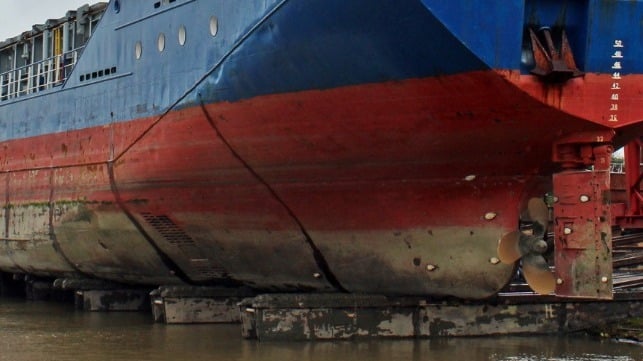Study: Antifouling May be a Major Source of Microplastic Pollution

In a new study, a team of environmental chemists from the University of Oldenburg examined microplastics in the North Sea and found indications that ships may be leaving behind a trail of plastic particles in their wake.
"Our hypothesis is that ships leave a kind of 'skid mark' in the water which is of similar significance as a source of microplastics as tire wear particles from cars are on land," said lead author Dr. Barbara Scholz-Böttcher.
Her team took samples from multiple locations in the German Bight, using stainless sieves to filter out ultra-tiny plastic particles. They analyzed these pollutants by heating them up to high temperatures, breaking them down into small fragments. Based on the mass and chemical properties of these fragments, they were able to match these substances to their respective classes of polymers, yielding clues into roughly what type of plastic product they came from. The study is unique in examining the composition of the particles: previous research efforts in the North Sea have only analyzed particle counts, not plastic type, according to Scholz-Böttcher.
The common consumer packaging plastics - such as polyethylene (PE), polypropylene (PP) and polyethylene terephthalate (PET) - were seen in quantity in samples taken near the coastline. However, in the open North Sea and the Elbe Estuary - particularly along the main shipping lanes - the composition differed. PVC, acrylate polymers and polycarbonates made up about two thirds of the total microplastic content by mass, and up to 80 percent in some samples. These plastics are not commonly used in packaging materials and likely came from a different source.
"We believe that these particles originate from ship coatings, where these plastics are used as binders in acrylic paints or epoxy resins, for example," Scholz-Böttcher said.

that matters most
Get the latest maritime news delivered to your inbox daily.
The finding suggests that several thousand tonnes of marine paint end up in European waters every year, with potentially harmful consdequences. The particles likely come from bottom coatings, according to the researchers, and are likely accompanied by the biocide compounds that are intended to fend off hull fouling.
Scholz-Böttcher's team is engaged in follow-on research to examine how this source of particulate pollution may affect river estuaries and sediments.
